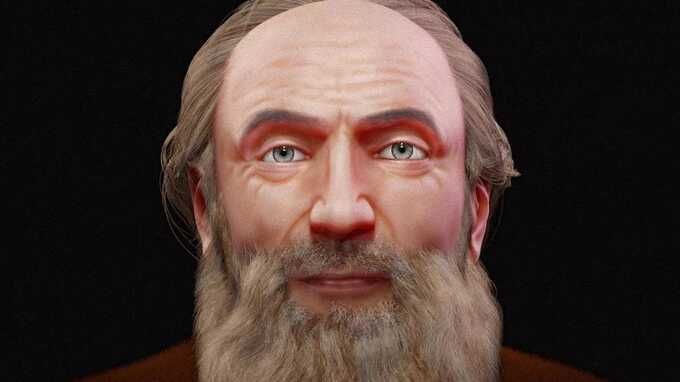Scientists reconstruct the face of the ’cruellest man who ever lived’
Centuries after he died while playing chess, scientists reconstructed the face of brutal tyrant Ivan the Terrible - showing that the cruel Russian leader indulged in a "disorderly life"
Scientists have reconstructed the "cold" face of Russia’s cruellest leader centuries after his death.
Ivan the Terrible was Russia’s first Tsar and turned his country into an empire by expanding into Siberia and the Caspian. One of history’s horrible tyrants, he is remembered for his infamous barbarity.
It’s said he had his subjects variously quartered, boiled alive, impaled, roasted, drowned under ice, and torn apart by horses. At one point, he may have even beaten his son to death.
For the first time in centuries, scientists have reconstructed his face by using his skull - after his grave was excavated in 1963 by Soviet scientist Mikhail Gerasimov. The lead author of the project, Cicero Moraes, said that it appeared the tsar "indulged" in a "disorderly life" of "excessive eating and alcohol abuse" - which may have "worsened his condition" in the last years of his life.
He said: "This is in contrast to the appearance he had when younger, when he was described as tall, with beautiful hair, broad shoulders, strong muscles, and a pleasant face. An interesting fact is that they found a large amount of mercury in his body, which made some suspect poisoning. But given the habits of the time, it may have been used as a treatment for some health problem."
The re-creation of his final face used a variety of methods. For instance, scientists used data from living donors to reveal the likely thickness of the tsar’s skin at different places across his skull. Another technique used was anatomical deformation - where the face and skull of a living donor was digitally altered until it matched the dimensions of Ivan the Terrible.

Cicero Moraes combined various types of data to reconstruct Ivan the Terrible’s face ( Image: Credit: Cicero Moraes/Pen News)
Mr Moraes, a Brazilian graphics expert, said that the final bust of Ivan the Terrible was a combination of all the data collected, and their final result had a "strong and determined" likeness.
He said: "It was a very interesting experience, as it involved not only facial approximation, but the study of the tsar’s history. I found sources that affirmed the epithet of ’terrible’ and others with different evidence, indicating that the fame may have been exaggerated, for example, by enemies and adversaries."
A previous depiction of the cruel Russian tsar from his lifetime was revealed by multispectral imaging in 2017, on the cover of a book called the Apostle, published in 1564. While the image is now too faded to compare with the new reconstruction, Mr Moraes said the face he created was a good match for a previous reconstruction by Dr Gerasimov himself.
"After finishing, I compared the faces and, although we used different approaches composing the busts, the results were very similar," Mr Moraes said. "They only differ in the lower lip and chin region."
Ivan the Terrible, who reigned as Ivan IV, was just three when he rose to power after the death of his father. His mother initially ruled as regent, but five years later she too would die - allegedly by poisoning - and the boy would become a pawn in the power struggle between competing noble families.
In remarks attributed to the tsar, he says of this time that he and his brother lived like "vagrants and children of the poorest". Animals apparently bore the brunt of his wrath, and he’s said to have pulled the feathers from live birds, and thrown cats and dogs out of windows.
However, by the time he was thirteen, Ivan was ready to reclaim what was his. At a feast in 1543, he had Andrei Shuisky - the power behind the throne - arrested and put to death, with legends recounting that he was torn apart by dogs.
A period of relative peace followed, but as he entered his 30s, Ivan IV was plunged into paranoia by a double blow. First his wife died in 1560, apparently by poisoning. Then, four years later, his close friend Andrei Kurbsky defected to the other side during a war against the Polish-Lithuanian Commonwealth.
Ivan IV tried to abdicate, citing the treachery of the aristocracy, but the court was unable to rule without him and begged him to come back. In exchange, he demanded the right to execute perceived traitors and confiscate their estates without interference. He also decreed the creation of the oprichnina, a vast portion of Russia where he could rule with absolute power.
Backed by his own personal guard, the Oprichniki, he brutalised the territory, executing anyone who fell foul of his paranoid zeal.
In 1570, the tsar had up to 15,000 people killed in Novgorod - then Russia’s second city - in a massacre so brutal that the city never regained its pre-eminence. He died aged 53, in 1584, during a game of chess, and was interred at the Cathedral of the Archangel in the Russian capital.
Read more similar news:
Comments:
comments powered by Disqus


































